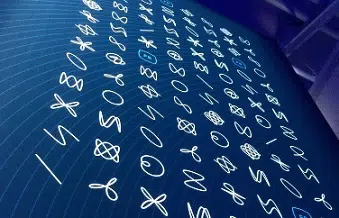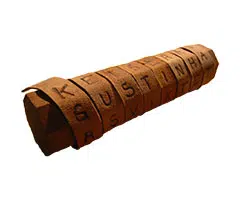 Cryptography is the technique or discipline that allows writing using a hidden code . In this way, anyone who does not know the key to decrypt the message cannot access its content.
Cryptography is the technique or discipline that allows writing using a hidden code . In this way, anyone who does not know the key to decrypt the message cannot access its content.
Through cryptography, the usual linguistic code is modified by using a cipher or a different coding . This makes the communication become unintelligible to those who lack the necessary knowledge to interpret it.
What cryptography seeks, in this way, is to guarantee the confidentiality of the message . Mathematics is often used to achieve encryption, a possibility that expanded thanks to computing .
The origins of cryptography are associated with the military field. Already in ancient times , armies used cryptography so that their messages were not accessible to their enemies. The system known as scythala , consisting of two poles with a papyrus that was rolled and unrolled, was one of the first methods.
The Scythal was used to send secret messages by the Spartan ephors , the magistrates of ancient Sparta. The two rods had to have the same thickness in each scythal, although it could vary from one to the other as needed. Papyrus, on the other hand, could also be replaced by a strip of leather.
Both the sender and the receiver had to have one of the rods. The first one rolled the strip around it and wrote the message along the length of the stick, starting each line at one end and ending it at the other. It is worth mentioning that the rod usually had faces, that is, it was not a straight circular cylinder (the geometric figure that is usually used as a reference for the manufacture of pipes, for example) but rather octagonal; This served to facilitate writing, as it provided the sender with several flat surfaces around the instrument.
Since the two sticks of the same scythala had to be identical, when the receiver rolled the strip to read the message he could visualize it perfectly. Needless to say, to protect the content, it was recommended to make each pair of sticks of different dimensions, so that it would not be easy for a spy to decode it. However, as of today, this system is not very reliable or very practical compared to the possibilities that computer science offers us, for example.
 One of the most frequently used techniques in the field of cryptography is known as transposition , since it consists of changing the order of the letters and signs of the message. The Scythal is the most basic example of transposition; Specifically, it is of the continuous serial or matrix type, since breaks in the characters are not included. When applied to an image, its equivalent is to rotate it ninety degrees to the right and then generate a mirrored version on its horizontal axis.
One of the most frequently used techniques in the field of cryptography is known as transposition , since it consists of changing the order of the letters and signs of the message. The Scythal is the most basic example of transposition; Specifically, it is of the continuous serial or matrix type, since breaks in the characters are not included. When applied to an image, its equivalent is to rotate it ninety degrees to the right and then generate a mirrored version on its horizontal axis.
In other words, transposition requires putting all the characters in a table, arranged in rows, and then organizing them in columns. Dividing the length of the message by the width of the row of the scylla should give the number of rows.
In the world wars, cryptography was very important and various machines were used for encryption. Closer in time , the achievement of the Argentine writer, journalist and guerrilla Rodolfo Walsh was known, who intercepted communications between the Central Intelligence Agency ( CIA ) of the United States and its agents in Central America and was able to decipher them thanks to a cryptography book.
Currently there are several types of cryptography. Symmetric cryptography , for example, uses the same key for encryption and decryption. Asymmetric cryptography , meanwhile, uses two different keys that maintain a mathematical link with each other.
